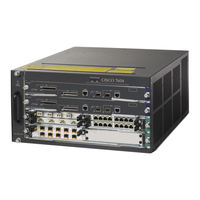Cisco CISCO7301 Manuals
Manuals and User Guides for Cisco CISCO7301. We have 2 Cisco CISCO7301 manuals available for free PDF download: Configuration Manual, Regulatory Compliance And Safety Information Manual
Cisco CISCO7301 Configuration Manual (308 pages)
NX-OS Interfaces
Brand: Cisco
|
Category: Recording Equipment
|
Size: 2.01 MB
Table of Contents
Advertisement
Cisco CISCO7301 Regulatory Compliance And Safety Information Manual (70 pages)
Internet Router
Brand: Cisco
|
Category: Network Router
|
Size: 3.37 MB

